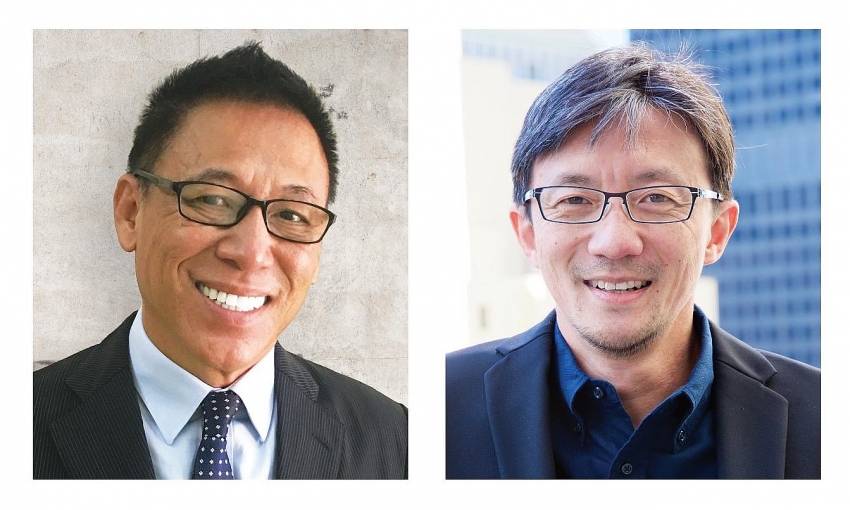Initiatives that resonate with local communities
 |
What potential does JERDE see in the Vietnamese real estate market?
The rising real estate demand due to Vietnam’s booming middle class and fast urbanisation pace are great opportunities for JERDE. Between 2014 and 2019, the middle class doubled to 33 million people, making this segment a third of the population. This number is expected to continue to rise to 44 million in 2020 and 95 million in 2030.
Vietnam’s urban population will rise 3.85 per cent every year until 2050, much higher than the ASEAN’s average rate of 2.1 per cent. Reputable Vietnamese real estate developers are seeking quality international planning and design firms such as JERDE to differentiate their products from their competitors.
Vietnam is home to eight UNESCO world heritage sites. It is blessed with a unique blend of geographical and cultural diversity. This inherent physical and cultural condition provides many opportunities for development in Vietnam to embody its own specific form of urban growth.
A form of urbanisation that ranges from the agrarian to the frenetic structure of cities based on marketplaces and motorcycles. JERDE would be privileged to help in contributing to the building of this vibrant community.
What are JERDE’s targets in the Vietnamese market?
Our goal in Vietnam is to establish JERDE as one of the premier urban planning and architectural design firms in the country with offices in Hanoi and Ho Chi Minh City. JERDE will bring its international experience in design and its unique brand of place-making to Vietnam and will be fully licensed to meet all the regulatory requirements.
JERDE is active in the Vietnamese market despite the pandemic complexities, although readjusting the manner in how its staff works. The efforts in setting up the JERDE office would happen as soon as the situation improves.
Vietnam is picking up on the international trends of green and sustainable development. How are you applying these criteria to your projects in Vietnam?
It isn’t so much that Vietnam is adopting these trends. The reality of global warming and the impact that cities have had on the planet’s finite resources, necessitate any city’s development to address both sustainability and how architecture should symbiotically interact with the natural environment.
The aspiration of all of JERDE’s projects is to cultivate that symbiotic relationship. From the planning of programmatic components to the study of materialism, the goal is to formulate a composition that embodies that balance of nature and architecture.
Phu Quoc Casino and Resort is the first project bearing the mark of JERDE in Vietnam. What other projects are you considering in the country?
We have some new projects coming up, one in Sapa and another in Nha Trang which will bring JERDE’s unique brand and international experience in design to Vietnam.
Place-making has an important role in cities all over the world. It inspires people to collectively reimagine and reinvent public spaces as the heart of every community. And it also facilitates creative patterns of use, paying particular attention to the physical, cultural, and social identities that define a place and support its ongoing evolution.
In Vietnamese architecture, mixing tradition and modernity is a current major trend in design. How will you harmonise the two?
Tradition and modernity are not diametrically opposed. In the architectural sense, tradition provides cultural specificity to a project, spatially organised in a contemporary manner.
As such, truly meaningful projects that resonate with local communities contain certain aspects of cultural specifics and are also relevant to the contemporary condition.
What are the trademark characteristics of JERDE’s hospitality and mixed-use projects?
At the core of JERDE’s projects regardless of their typology is an embodiment of people-centric spaces that are focused on building enriched and enlivened communities. This approach is a common thread to all our projects from the communal spaces and the intimate spaces of the guest rooms of our hotels; to the Verdant vibrant connective spaces of our mixed use cities.
What the stars mean:
★ Poor ★ ★ Promising ★★★ Good ★★★★ Very good ★★★★★ Exceptional
Related Contents
Latest News
More News
- JustCo expands business into Vietnam (December 22, 2025 | 17:58)
- Sun Group breaks ground on $2 billion Van Don casino complex (December 19, 2025 | 18:14)
- Rare, beautiful, sustainable: the mark of iconic real estate (December 19, 2025 | 08:00)
- Owner-occupied housing stabilises, paving the way for new growth cycle (December 18, 2025 | 17:04)
- Unlocking urban potential of smart cities (December 18, 2025 | 16:50)
- Green finance offers 'passport' for Vietnamese construction, building materials firms (December 15, 2025 | 08:00)
- Gamuda Land commit long-term investment (December 12, 2025 | 11:49)
- HITC ties up with Evolution to develop AI and hyperscale data centres in Vietnam (December 11, 2025 | 12:09)
- Real estate deals boom via high-profile names (December 08, 2025 | 11:32)
- Industrial segment shaped by M&As (December 08, 2025 | 08:00)

 Tag:
Tag:





















 Mobile Version
Mobile Version